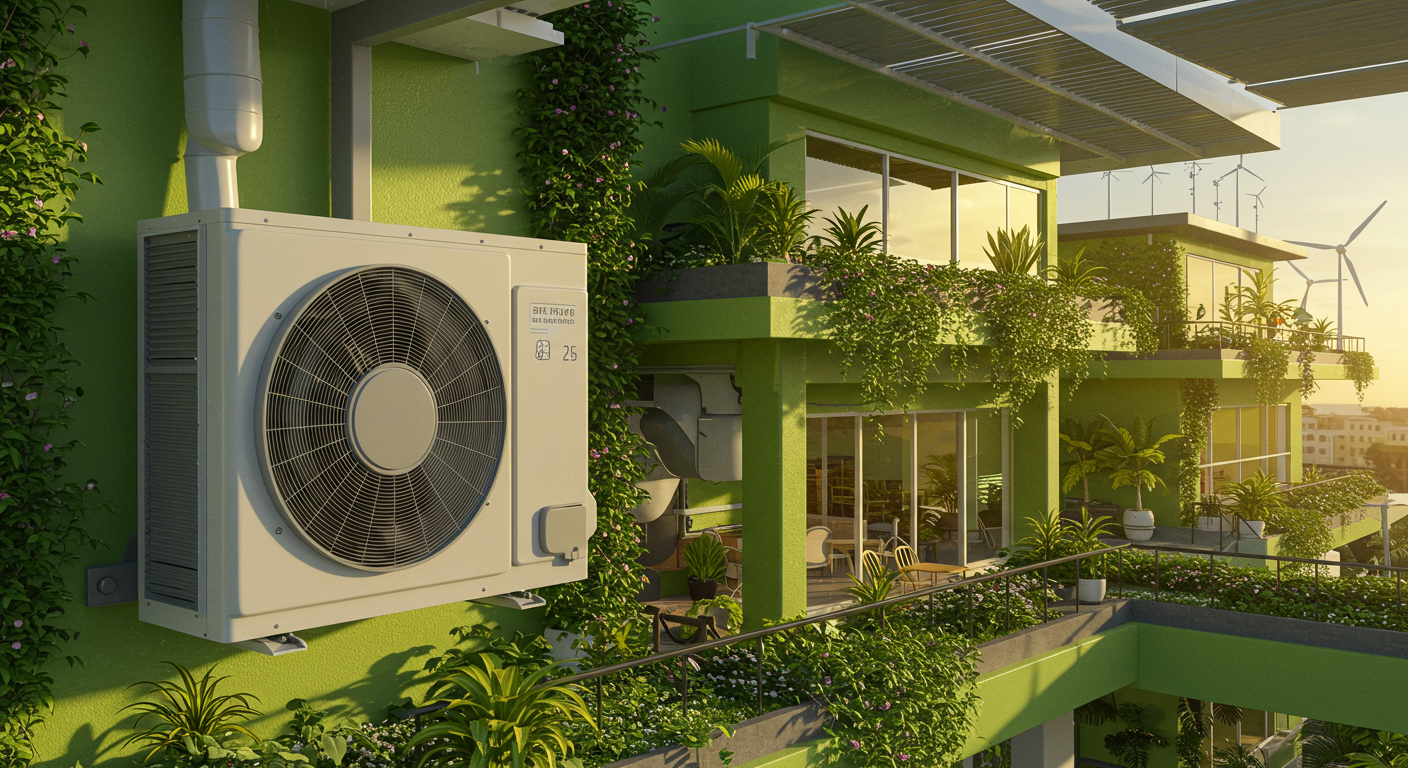
Integrating Solar with HVAC for Complete Energy Solutions
Are you ready to revolutionize your HVAC system with the power of the sun? Solar-integrated HVAC systems offer a compelling way to enhance energy efficiency while reducing costs. In this article, we explore the benefits and challenges of integrating solar energy into your HVAC solutions, providing insights on how to optimize these systems for maximum performance.
Understanding Solar HVAC Integration
Solar-powered HVAC systems are gaining popularity due to their significant energy savings and environmental benefits. These systems, including solar-assisted heat pumps and split solar air conditioners, can boost the system Coefficient of Performance (COP) by 60%-70% when optimally sized solar collectors and phase change materials are used. This is particularly effective in regions with high solar irradiance.
The Rise of Solar Air Conditioning
The market for solar air conditioning is expanding rapidly, with split solar air conditioners expected to represent 36.6% of the global market by 2025. These systems are favored for their modular design, easy integration with solar panels, and compatibility with various building types. In North America alone, the solar AC market is projected to grow from $0.6 billion in 2022 to $2.5 billion by 2030.
Cost Considerations and Incentives
While solar-powered HVAC solutions are becoming more cost-effective, the initial investment can be steep. For example, a retrofit on an existing air-to-water heat pump starts at $8,148, excluding installation and storage costs. However, federal and state incentives, such as the 30% U.S. tax credit for solar installations, are driving residential adoption, accounting for 42.3% of the global solar AC market in 2025.
- Initial cost for a retrofit: $8,148 (excluding installation and storage)
- Cost for a single vacuum tube thermal collector: $1,044
- Complete retrofit kits available at $5,086
Enhancing Efficiency with Advanced Components
Integrating advanced components such as inverters, battery storage, and smart thermostats into solar HVAC systems enhances energy savings and grid independence. Hybrid systems that combine solar energy with grid power offer reliability during periods of low sunlight or high demand, reducing air conditioning costs by 50–75% in regions with high solar insolation.
Overcoming Adoption Barriers
Despite the benefits, key barriers to adoption include high upfront costs, efficiency variations based on climate, and the need for dedicated installation space. However, technological advancements and government incentives are expected to mitigate these challenges. Ongoing research and development focus on battery systems, variable-speed compressors, and IoT-enabled system control for improved efficiency and affordability.
FAQ: Solar HVAC Integration
What are the benefits of solar HVAC systems?
Solar HVAC systems offer significant energy cost savings, environmental benefits, and increased energy independence.
How do solar panels work with HVAC systems?
Solar panels collect solar energy, which can be used to power HVAC systems, reducing dependency on grid electricity.
Are there any government incentives for solar HVAC installations?
Yes, many regions offer incentives, such as a 30% U.S. tax credit, to encourage solar energy adoption.
What are the initial costs involved in solar HVAC integration?
Initial costs can vary, but a retrofit on an air-to-water heat pump can start at $8,148, excluding installation costs.
Can solar HVAC systems work in all climates?
While they are most effective in regions with high solar irradiance, hybrid systems can work efficiently in various climates.
Ready to make the switch to a solar HVAC system? Consider exploring options like Ruud solar-integrated heat pump systems, which leverage solar energy, heat pump efficiency, and smart controls for complete energy management. With the right approach, you can enjoy a sustainable and cost-effective solution for your heating and cooling needs.
Take the first step towards a sustainable future by exploring solar HVAC solutions today!

